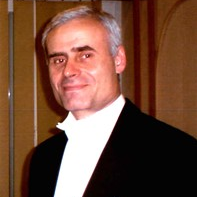Microwave Assisted Synthesis of Hybrid and Nano-Engineered Materials
A special issue of Crystals (ISSN 2073-4352). This special issue belongs to the section "Hybrid and Composite Crystalline Materials".
Deadline for manuscript submissions: closed (31 May 2021) | Viewed by 4069
Special Issue Editor
2. Chemistry Department, Moscow State University, Leninskie Gory 1, Bldg. 3, 119992 Moscow, Russia
3. Institute of Ecology and Engineering, National Science and Technology University MISiS, Leninsky Prospect 4, 119071 Moscow, Russia
Interests: catalysis; nanomaterials; renewables; green chemistry
Special Issues, Collections and Topics in MDPI journals
Special Issue Information
Dear Colleagues,
Development of economically attractive and environmentally friendly nanomaterials, which are of immense importance for improving quality of life, is often hampered by the poor efficiency of the methods used. Application of microwave heating/activation provides sometimes new opportunities related to the synthesis of extremely small nanoparticles or extremely uniform particle-size distribution, as well as the production of metastable phases that are otherwise not formed under conventional heating conditions. Of special interest are hybrid nanomaterials that demonstrate a synergy of the components. The use of microwave activation for production of nanomaterials and in-situ chemical, in particular, catalytic processes can provide a significant gain in energy consumption. MW-assisted processes occurring in the presence of hydrogen may be enhanced due to the effect of hydrogen spillover.
Prof. Dr. Leonid Kustov
Guest Editor
Manuscript Submission Information
Manuscripts should be submitted online at www.mdpi.com by registering and logging in to this website. Once you are registered, click here to go to the submission form. Manuscripts can be submitted until the deadline. All submissions that pass pre-check are peer-reviewed. Accepted papers will be published continuously in the journal (as soon as accepted) and will be listed together on the special issue website. Research articles, review articles as well as short communications are invited. For planned papers, a title and short abstract (about 100 words) can be sent to the Editorial Office for announcement on this website.
Submitted manuscripts should not have been published previously, nor be under consideration for publication elsewhere (except conference proceedings papers). All manuscripts are thoroughly refereed through a single-blind peer-review process. A guide for authors and other relevant information for submission of manuscripts is available on the Instructions for Authors page. Crystals is an international peer-reviewed open access monthly journal published by MDPI.
Please visit the Instructions for Authors page before submitting a manuscript. The Article Processing Charge (APC) for publication in this open access journal is 2600 CHF (Swiss Francs). Submitted papers should be well formatted and use good English. Authors may use MDPI's English editing service prior to publication or during author revisions.
Keywords
- Microwave irradiation
- Hybrid materials
- Nano-engineered materials
- Non-thermal effects
- Energy efficiency





